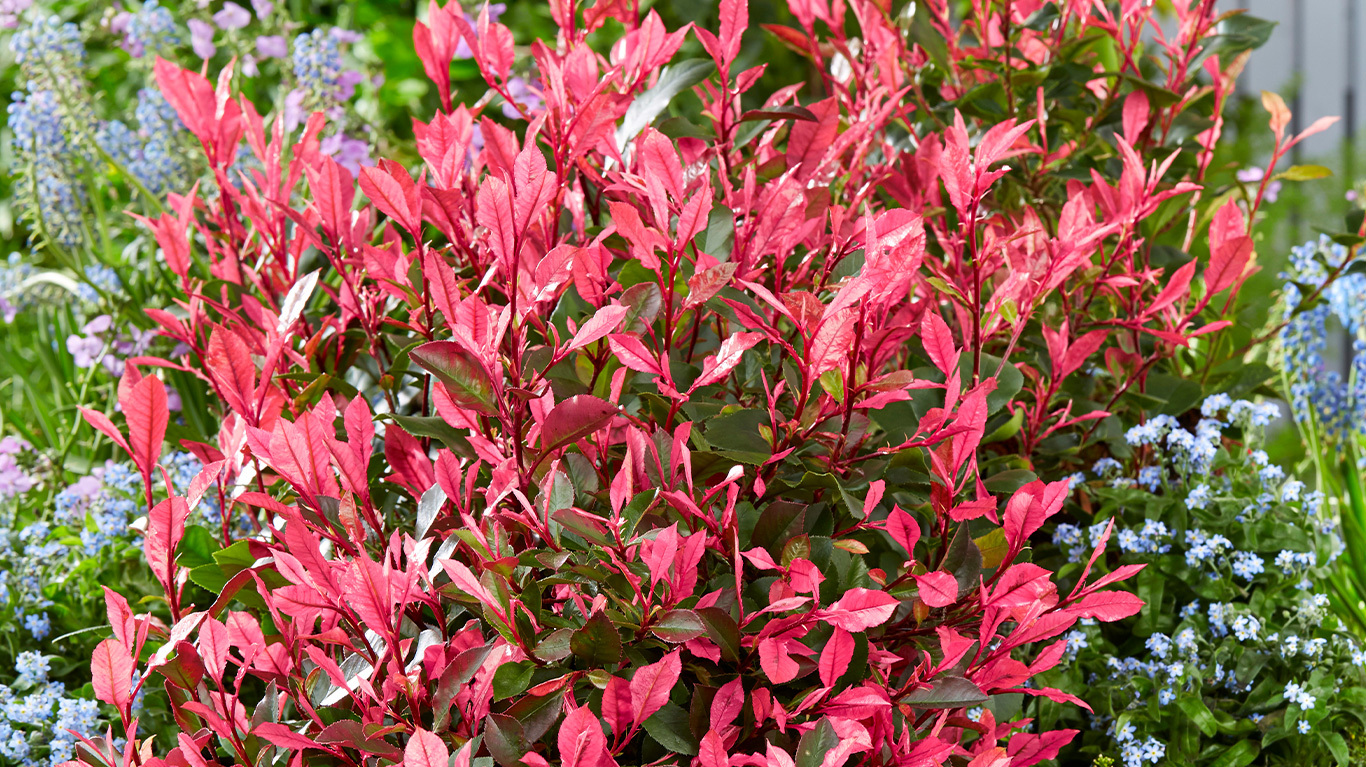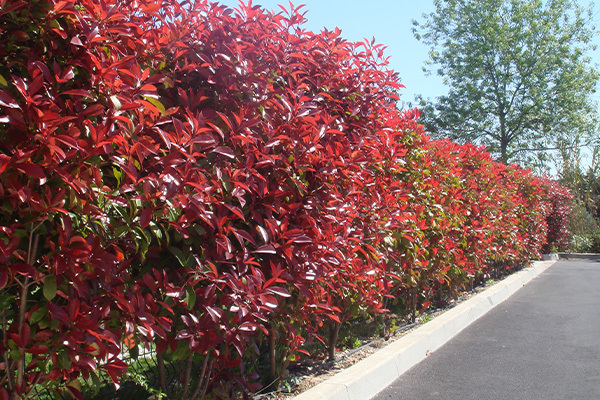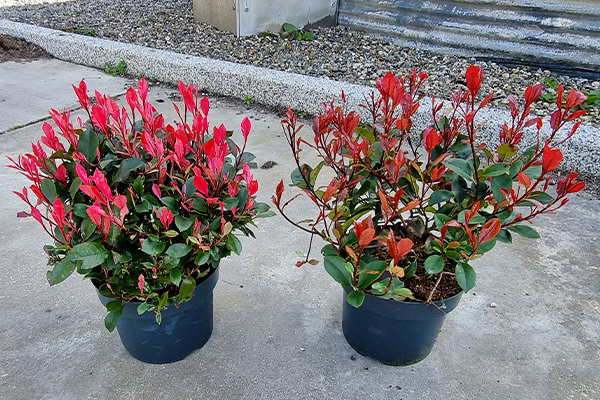
What We've Included
When to Plant | Where to Plant | How to Plant | When to Water | Mulching | Pruning | Propagating | Common Issues | When Will they Flower
When to Plant Photinia
Photinia shrubs can be planted in autumn or spring unless you have a container shrub, as they can be grown at any time of the year if the soil isn’t frozen or waterlogged. Container shrubs purchased in summer should be planted out as soon as possible and watered regularly to help them settle in.

Where to Plant Photinia
Photinias prefer humus-rich and fertile soil that is well-drained. However, they can tolerate almost any soil type, even clay – as long as well-rotted compost or manure is added before planting. The exceptions to this rule are Photinia beauverdiana and P. villosa, as they need more acid or alkaline soil conditions.
You can grow photinias pretty much anywhere in the garden, but preferably in a spot that is sheltered from wind and harsh weather conditions. Depending on the variety you have, these plants can be grown in containers or in the garden as a hedge, or even as a climbing plant if yours does so (double-check the information given with your plant to find out exact growing parameters).
Some varieties, like P. x fraseri, aren’t necessarily compact but can be grown in containers if they’re pruned regularly for a compact shape.
How to Plant Photinia
Planting Photinia from pots into borders
Pot-grown plants are incredibly easy to plant and grow. Whether you’re growing them directly outside into the border or into a container, our pot-grown plants are a breeze from the moment they arrive.
- Prepare the soil before planting with plenty of organic matter, like compost, before planting. This helps the soil to retain moisture, helping your Photinia thrive.
- Water the plant well before planting it in place so that the stress on the plant is minimalised.
- Dig a hole in the border that’s twice the width of the root system, and as deep as it was in its pot.
- Wedge in the plant by adding soil to the gaps in the hole, firming down the surface to ensure it’s in place.
- Water in well, and you’re done!
Planting Photinia into Containers
- Choose a container that is slightly larger than the original container.
- Fill the pot with your compost of choice.
- After two or three years, the roots fill the pot, which means it’s time to repot it into a slightly larger container in spring.
When to Water Photinia
For the first few years, water Photinia shrubs regularly. Once they have established, they won’t need watering as often, except for particularly dry spells in summer to help produce healthy growth. Large varieties, like hedging, may need more watering than the average shrub as the roots are sheltered from the rain. Container plants dry out fast and should be watered regularly in the summer, regardless of their age.

Mulching
Mulch your shrub with organic matter made up of garden compost, or rotten manure, to help the plant retain its moisture and suppress weeds. Ensure to leave a circle free of mulch around the immediate base of the plant to prevent rotting.
Pruning Photinia
Most varieties of photinia won’t need much pruning, but they could do with a little trim in spring or summer to maintain their shape. However, more vigorous varieties like fraseri ‘Red Robin’ can grow up to 30cm in a year, so need to be kept under control.
If your plant is getting too big, shorten its stems by up to 15cm, cutting above the outward-facing bud. For hedges, remove the tips of young shoots.
Propagating Photinia
Photinias can be propagated by taking semi-ripe cuttings in late summer and early autumn or softwood cuttings in early summer. You can also propagate varieties like P. villosa and P. davidiana from seed, which should be chilled to aid germination.

Common Issues, Diseases, and Pests
Photinias can be usually pest and trouble-free. However, they can be damaged by late frosts or wind, especially if it’s a new plant. Yellowing on leaves can also indicate nutrient deficiencies in alkaline soils. Some varieties, like Photinia beauverdiana, need neutral or acidic soil to thrive. If you’re unsure, double-check the plant you’ve grown for more information.
They can also be affected by powdery mildew, which can cause purple blotching on foliage.
When will Photinia Flower?
Photinias can produce tiny flowers from spring to early summer. However, this can vary from plant to plant, so double-check your variety beforehand to know what to expect!
